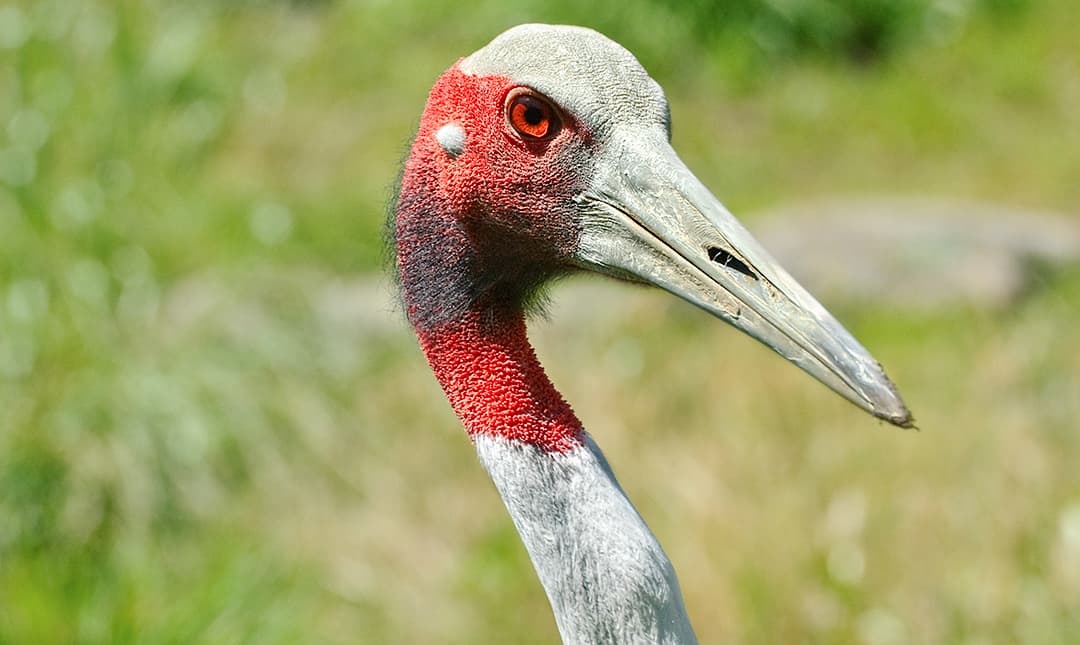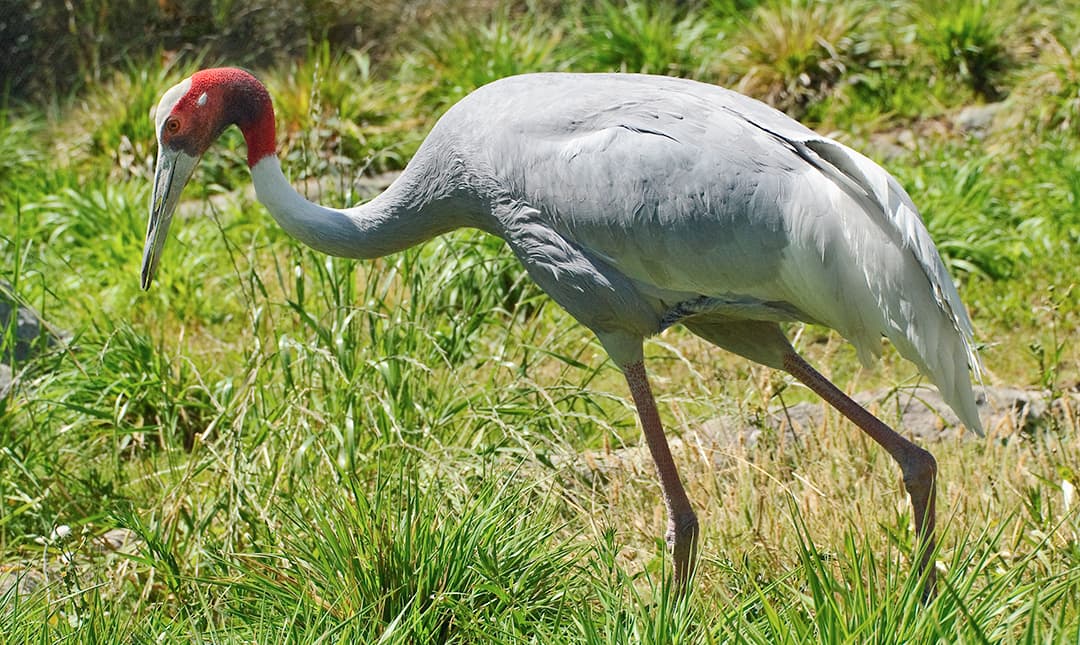About
Reaching about six feet in height, the sarus crane is the world’s tallest flying bird. Their elaborate courtship dances include bowing, hopping, wing flapping, and stick or grass tossing. The pair also engages in complex duets with heads thrown back and bills pointing skyward. These calls are sometimes mistaken for an elephant trumpeting and can be heard for several miles. In some cultures, Sarus cranes are considered sacred and regarded as symbols of eternal life. It is believed Sarus cranes ferry the deserving souls to the heavens.
Sarus cranes have adaptations for wading in marshy, shallow wetlands. Long toes and legs allow them to venture into deeper water. They use their long bills to probe muddy silt in search of fish, insects, and crustaceans as well as rice, grains, and aquatic plants. Nesting begins at the start of the rainy season. Both sexes build a large nest more than six feet in diameter and more than three feet high. Pairs may use the same nest site for years. Both parents incubate the (usually two) eggs for 31 to 34 days and raise the young. Chicks are able to fly at around three months of age.


Habitat
Wetlands and marshy areas of northern and central India, Nepal, and Pakistan.
Diet
Omnivores, these birds eat insects, fish, crustaceans, aquatic plants, seeds, and berries.
Physical Characteristics
Sarus cranes are between four and six feet tall and weigh up to 26 pounds. Their wingspan can reach nine feet. Lifespan is estimated at about 40 years.
LOCATION WITHIN THE ZOO
You’ll find this bird in the Asia section, near Elephants of Asia. See Zoo Map.



